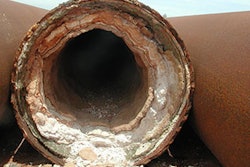From precision instruments to carburetors, manufacturers from the aerospace, food, drug, machining and automotive industries have discovered that industrial ultrasonic cleaning systems provide them with premium results over traditional cleaning methods — and on top of that — are safer, faster and less expensive.
Industrial work environments need an effective industrial cleaning machine to remove contaminates from the surfaces of parts before they are sent to the next step in the manufacturing process. Depending on the industry, these contaminates could include machine oil, casting sand, metal shavings, polishing compounds or even human skin oil. To expedite the cleaning process and effectively manage labor costs, manufacturers typically use an industrial washer rather than tie up resources to wash components by hand.
Different types of industrial washers remove contaminants with varying effectiveness, depending on the intricacy of the part. For example, almost any type of system can clean a smooth, highly polished surface.
Unlike spray washers or immersion cleaners, or using solvents, industrial ultrasonic cleaners decontaminate at a near-microscopic level and can clean threads, drilled blind holes, sharp inside corners, rough surfaces and inaccessible internal cavities not reachable by other types of industrial washers. When items are placed into an ultrasonic cleaning tank using environmentally friendly, water-based cleaning soaps, an energy-converting transducer produces sonic frequencies approaching 40,000 cycles per second. These ultra-high frequency sound waves produce millions of microscopic vacuum bubbles that implode when they come in contact with a surface. Energy is released by the creation and collapse (called cavitation) of these bubbles. The resultant shock waves break up and lift off dirt, residue and other contaminants. The implosions work similarly to small vacuum cleaners that literally pull off caked on residue from any area, removing contaminants down to hundreds-of-thousandths of an inch in size.
Ultrasonic cleaners are extremely worthwhile when a component or part is very complex, needs to be super clean, or the manufacturer wants to save on labor and even energy costs.
For parts that come in contact with the human body, such as food preparation and medical equipment, it is imperative to remove dirt, debris and abrasive contaminants, as well as molds, bacteria and toxic chemicals that can make humans sick. Because these contaminants often settle into minute cracks and crevices that are hard to reach, ultrasonic cleaning is the most reliable method to remove them.
Due to its gentle nature, ultrasonic cleaning also is suitable for industries like computer chip manufacturing when the proper cleaning frequencies are used because it won’t damage the product.
Industrial ultrasonic cleaners provide manufacturers with a range of tangible bottom-line-boosting benefits, including:
1. Speed. An average ultrasonic cleaning cycle lasts between two to 10 minutes, with cleaning times varying widely based on the size, composition, and number of components to be cleaned. Cleaning must be properly implemented with attention to chemistry, temperature, and loading.
2. Safety and Environment. Manual cleaning in industrial settings typically occurs with the use of acids and powerful petroleum-based solvents that cause skin irritation, rashes and have a low odor. In addition, these toxic solutions require special disposal. Even some automated industrial washers use potentially dangerous solvents, introducing a possible safety hazard into the work environment that can result in workers’ compensation claims and lost hours. In contrast, ultrasonic cleaning typically utilizes water-based, biodegradable and non-toxic cleaning detergents. Implementing ultrasonic cleaning removes safety hazards and creates a safer, more environmentally friendly work environment.
3. Increased Cleanliness. Ultrasonic technology has the capacity to reach into components on a microscopic level, cleaning even small or complex applications where a cleaning brush might not reach. Ultrasonic cleaning gets part cleaner and helps them function longer compared to many manual cleaning solutions that require more time and provide a less comprehensive clean.
4. Protection and Longevity. A properly calibrated ultrasonic cleaner uses touch-free cleaning on a microscopic level that can protect the surface of even delicate components. However, it’s crucial to consult with a knowledgeable ultrasonic cleaning representative because components cleaned with the wrong solution, at the incorrect temperature, improper frequency, or the wrong amount of time, may cause surface pitting or pockmarking.
5. Savings. Ultrasonic cleaning utilizes affordable water-based soaps and enzyme solutions instead of spray solvents and toxic cleaning products, saving manufacturers 70 percent or more in solvent costs. In addition, industrial ultrasonic cleaning technologies save money by reducing costly and labor-intensive hand cleaning, and by speeding up complex cleaning processes.
Ultrasonic tanks vary in size from large steel tanks to small tabletop washers to make efficient work of any job. An investment in an ultrasonic cleaner can save manufacturers time and labor costs, as well as reducing safety hazards. In fact, many industrial ultrasonic cleaning systems pay for themselves in less than a year. In addition to decreasing cleaning costs, ultrasonic equipment also improves the quality and reliability of a manufacturer’s product line and decreases the company’s impact on the environment.
For more information on Omegasonics industrial parts washers and ultrasonic cleaning tools, please visit the Omegasonics website at www.omegasonics.com.























